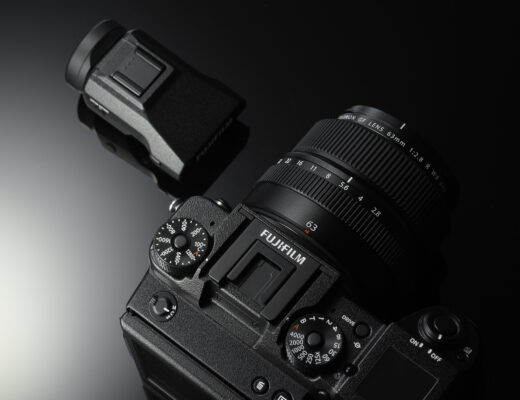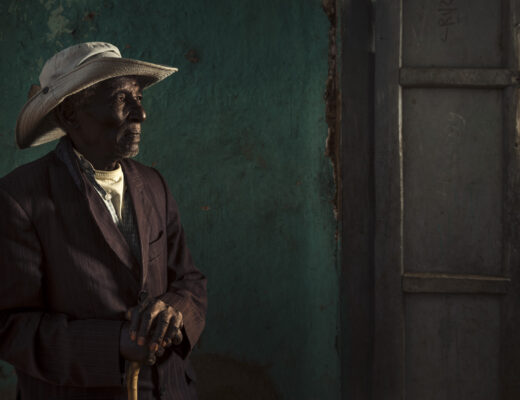Luca Bracali is a man on a mission. Even as I caught up with the Italian photojournalist, filmmaker and explorer in Siena, Italy (not an easy task considering his intense travel schedule) where he was a featured exhibitor during the Siena International Photography Awards (SIPA) Contest and Art Photo Travel Festival, Bracali was on the move, talking about his work and the importance of the festival for the local economy with members of the Siena chamber of commerce.
I don’t speak Italian, but as Bracali led a tour of his exhibition hosted at Siena’s beautiful Duccio di Boninsegna Art School, it was obvious by the rapt attention and numerous questions from community leaders that his audience was not only impressed by his images, but very interested in his message.
“Photography is the most international language ever known,” Bracali told me later. “Even more so than music, because photography is a means of transportation. With photography you can transport emotion and you can transport information.”
But in today’s image-heavy world, Bracali said, the power of photography is in the information conveyed along with it and the storytelling is of critical importance.
“Otherwise, it’s just a collection, without soul.”
Early on in his 30-year career as a professional photographer, Bracali achieved commercial success, shooting everything from motorcycles and cars to models, honing his skills and trademark mastery of color, light and form that he credits to studying work of the great Italian Renaissance artists.
But it was on an assignment with Toyota 4Runner in 1991, when he traveled to 14 countries and logged over 14,000 kilometers, photographing and reporting from some the most remote reaches of Europe, that he discovered his true mission: Planet Earth.
“I loved shooting cars like Ferraris,” Bracali said. “But then I would say to myself, ‘I love this car, this Ferrari, but it does not belong to me, unfortunately. And models – lovely models. Beautiful. But again, they didn’t belong to me.’ Then I discovered planet earth and the beauty of planet earth. And I said, ‘this is something that really belongs to me. It belongs to you and to him and it belongs to me.’”
The more he traveled and learned about global environmental issues, Bracali said, the more concerned he became for the fragile state of our planet, and all the more invested in what he now views as a personal and spiritual mission.
In 2003, he traveled to Antarctica on an icebreaker to Vernadsky Research Base where British meteorologist Jonathan Shanklin first discovered a hole in the ozone layer.
“I started being a bit worried about the planet earth’s condition. The planet is our heritage. Will we ever be able to donate this planet, this gift, to our children? Maybe not.”
The Call of the Arctic
Since then, Bracali has become a force of nature himself, traveling to 138 countries and working for National Geographic, the Italian national TV network RAI and other media in his quest to not only document the beauty of earth, but educate, build awareness and inspire people to take an active personal role in conservation efforts around the world. He has also written numerous books and keeps up a busy teaching schedule, including photography courses and workshops, and enjoys sharing his passion for photography and the planet with young people.
Bracali is especially interested in arctic regions, an area that has long fascinated him. In fact, it was as a 16-year-old schoolboy in Italy that he first began studying indigenous Alaskan people, including their settlement and migration. He remained fascinated and in 2008, during his “Arctic Sun on my Path” expedition, he attempted to cross the Bering Strait from Wales to Little Diomede (40 kilometers) but found inconsistent ice and had to return while in the middle of the frozen ocean.
In 2009, Bracali became the only reporter to reach the geographic North Pole on skis, an expedition that included eight days of self-supported trekking. He now works with top scientists from around the world to better inform his reporting and build on the power of his images, partnerships that are appreciated on both sides. Following Bracali’s 2014 reportage for National Geographic Italia on the Atacama Large Millimeter/submillimeter Array (ALMA) telescope in northern Chile (the largest astronomical project in existence) the Minor Planet Center hosted by the Harvard-Smithsonian Center for Astrophysics in Cambridge, Mass., USA, named the 198.616° asteroid after him.
A few days after leaving Siena, I received a photograph from Bracali of himself shooting polar bears with a drone camera in Churchill, Manitoba, Canada, where the bears make their annual fall migration. His reportage soon thereafter for National Geographic Italia documents a grim truth. The bears are struggling with November temperatures soaring to 55°F, insanely high for arctic standards, and no sea ice on Hudson Bay, leaving the bears without platforms from which to hunt for seals, their main food source. . In fact, NASA recently reported that each of the first six months of 2016 set a record as the warmest respective month globally in the modern temperature record, which dates to 1880. The bears are also suffering from the effects of PCB and other environmental pollutants.
It’s Your Planet
Renaissance artist Michelangelo Buonarroti is credited with saying, “The true work of art is but a shadow of the divine perfection.”
All these years later, as Bracali uses the power of photography to reveal brushstrokes of light on an ailing planet, he believes the best hope for the earth is through individual actions.
“The hope is that slowly, people can really get my message and do something personally” he said. “If we do a little extra, like, for instance, putting a seed in the ground. If every person planted four trees per year for 20 years, we could have balance again in the atmosphere.”
“You may not be interested in photography. You may not be interested in cars,” he added, “but how can you say, ‘I don’t care about the planet earth? Because you’re walking on the planet. It’s your planet.’”
What’s next?
Bracali said he plans to complete several books in the next year, in addition to the recently published “Rapa Nui” about the people of Easter Island. They will include a book about Norway’s Lofoten Archipelago and the flora of beautiful Pistioa, Italy, his home city, and a place elected as the Capital of Culture for 2017. He’ll also be finishing a book about the U.S. National Parks in the spirit of Ansel Adams. In addition, Bracali has been invited to document the national parks of Canada, where he hopes he will have easier access to drone photography [U.S. drone permitting processes, especially on Federal lands, are currently not friendly to photographers or researchers] which he sees as a new frontier.
Finally, Bracali said, he wants to take his mission to a new level, literally.
“I want to go more deeply into the ice and permafrost,” he said. “Permafrost is another important issue.”
He’s already in touch with a world permafrost expert (professor Vladimir Romanovsky from the University of Alaska Fairbanks) on the project – and there is no doubt he will succeed in his mission.
Learn more about Luca Bracali and his work at http://www.lucabracali.it/ and at Wikipedia here: https://en.wikipedia.org/wiki/Luca_Bracali



























